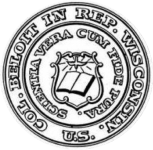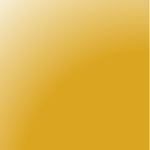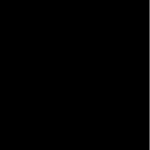Beloit College
Wisconsin
1846






Beloit College students selected blue and ecru as their school colors in 1876. Men’s striped blazers and caps were popular in the 1880s, but because fabric was not easily available in those colors the Beloit men could not purchase the fashionable collegiate haberdashery they desired.
So in the fall of 1889, Beloit students voted to change the school’s colors to navy blue and sky blue. Unfortunately, once the blazers and caps arrived the students judged the combination of colors to be less attractive than they had hoped. So about a month later, in December 1889, the students held a pep rally for the football team and selected the single color of gold to be the new college color. Although gold was the Junior class color, the students felt that the warm orange shade of the “old gold” they chose nicely complemented the colors of all the other classes. Gold was also a readily available fabric color for blazers and caps. Their choice was quickly approved by Beloit faculty and alumni.
If needed, black was used as an accent color. Into the 1920s, for instance, the sweaters worn by football players were gold with a black “B”, but gold was the only official color of the college.
In 1925 a faculty committee officially clarified the shade of Beloit’s gold as “old gold”. However, Beloit’s athletic teams began to use gold and blue uniforms at about that time, and today the college’s original old gold shade has brightened to more of a true gold color.
Citations in the World Almanac (listed by cover date; color information is from the previous year): old gold (1895); gold (1896-1900); old gold (1902); gold (1904-1918); gold/black (1923-1931); old gold (1934-1935)
Cotrell & Leonard was a 19th century academic costume manufacturing firm that supplied caps, gowns, and hoods to most of the prestigious colleges and universities in the US. Gardner Cotrell Leonard, one of the partners in this firm, was Director of the Intercollegiate Bureau of Academic Costume (IBAC), an organization founded in 1887 to compile data on European and American academic costume. Leonard was also a consultant to the Intercollegiate Commission on Academic Costume, which on 16 May 1895 approved a voluntary system of academic costume that quickly became the standard followed by most American colleges and universities.
Two years before the Intercollegiate Code was created, Leonard wrote an article called “The Cap and Gown in America” for the December 1893 issue of The University Magazine. In this article Leonard described various types of caps and gown currently used by American colleges and universities and encouraged more schools to adopt academic costume. In this article Leonard mentioned several institutions that used cap and gown; these were no doubt clients of the Cotrell & Leonard firm where he worked. So when the 1895 Intercollegiate Code was authorized and the IBAC began assigning hood lining patterns for each college or university that officially adopted the Code, clients of Cotrell & Leonard would probably have been some of the first to have had hood lining patterns assigned to them.
Beloit College was mentioned in “The Cap and Gown in America” as having adopted academic costume, so the IBAC is likely to have assigned a hood lining pattern to the college in 1895 or soon after. But Beloit’s colors and the arrangement of those colors in the lining of the hood were not cited until a 1927 IBAC list that described the college’s hood lining as being the single color of old gold. However, in this list there were no fewer than three institutions to which the IBAC had assigned identical old gold hood linings: the University of Iowa, Beloit College, and DePauw University. The hoods were probably registered in that order. Why the IBAC permitted this duplication is unknown, except that all three institutions had only one official color: old gold.
To resolve this problem a black inverted (or “reversed”) chevron has been added to Beloit’s old gold hood lining, recalling the traditional use of black as an accent color by the college.
